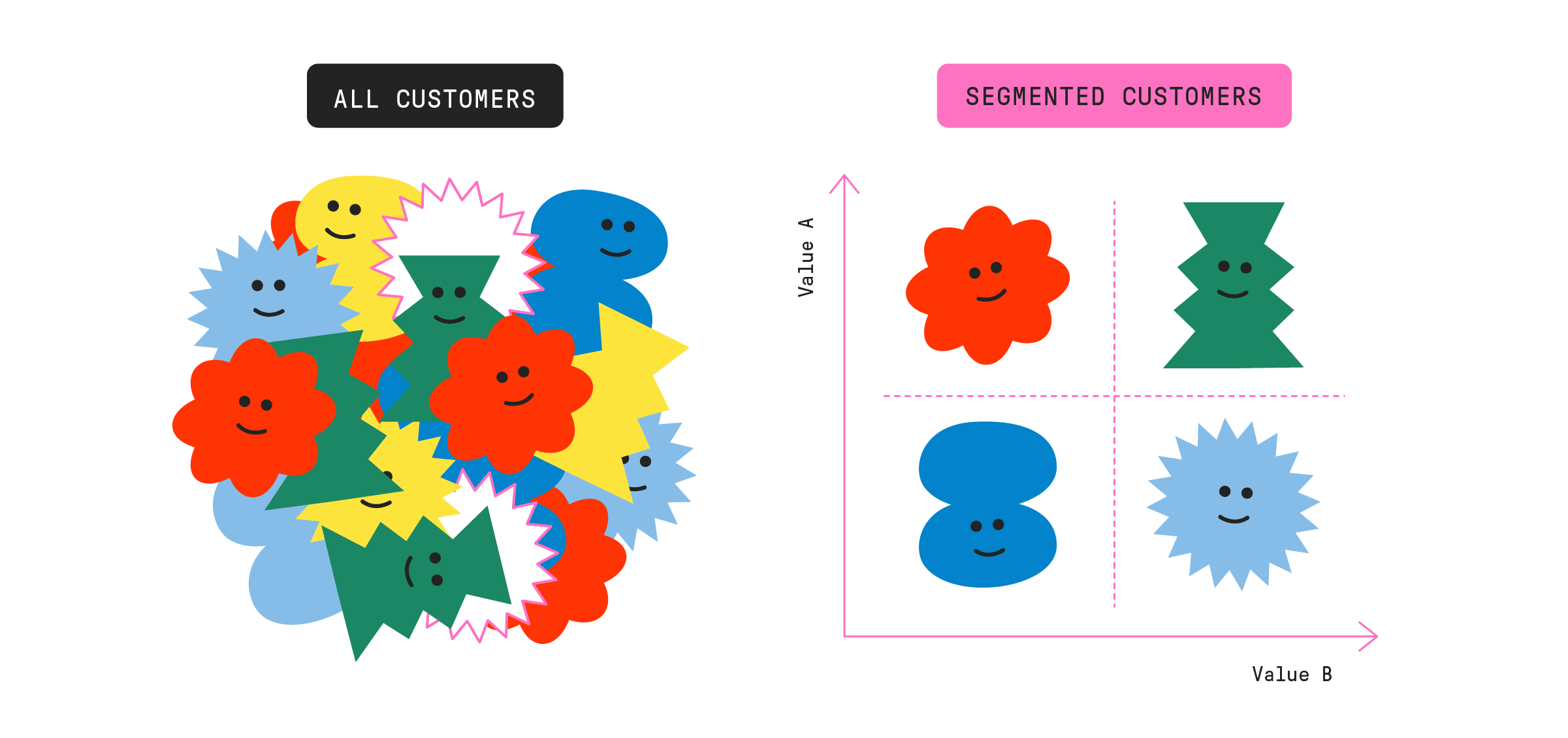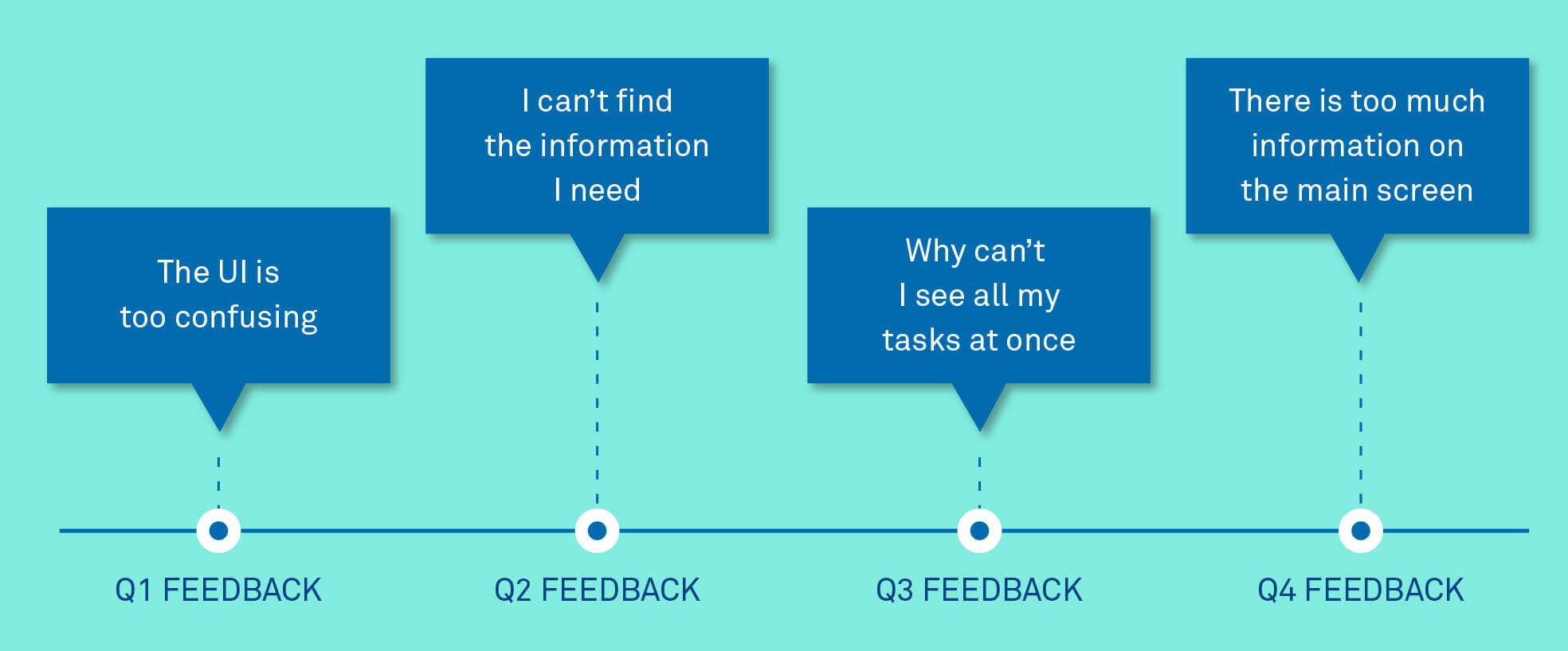
Reading list: Know your customers
Main illustration: Susan Payne
Our mission, as we have often discussed, is to make internet business personal – that goal underpins everything we do and build.
One key aspect of forging these personal relationships is not just that customers feel they have a personal connection with a business, but that businesses can actually benefit from knowing their customers.
The reason real-world businesses can thrive by having good relationships with their customers is not just down to loyalty and trust, though that is important, but also because they can easily tell what their customers need – after all, they get to talk to them regularly. Knowing their customers like this allows them to adjust depending on those needs.
“The scale of doing business on the internet means that sense of personal connection can feel hard to emulate, but it absolutely is possible – it just requires thoughtful, consistent effort”
The scale of doing business on the internet means that sense of personal connection can feel hard to emulate, but it absolutely is possible – it just requires thoughtful, consistent effort. That is even more true during the current COVID-19 crisis, when many businesses are suddenly operating online and are having to adjust to an entirely new form of relationship with their customers.
From the earliest days of Inside Intercom, we have frequently discussed the need to better know your customers, and in the latest in our series of posts looking back through the archive, we present a selection of some of our best posts on the topic, covering everything from gathering customer feedback to creating accurate customer segmentation, from correctly framing questions to using the feedback to shape your roadmap.
Have you tried talking to your customers?
Knowing your customers was a core part of Intercom’s DNA from the very beginning, as this early post by our co-founder and Chief Strategy Officer, Des Traynor, demonstrates. Frequent, easy, open and contextual communication with customers yields incredible benefits, above all the information required to iterate and improve your product.
Key takeaway:
“I spend about 20-25% of my week talking with customers learning who they are, what their product does, where they were based, how often they use Intercom, how they found us, what they love, where they want to see improvements etc. Any question beginning with ‘I wonder if anyone…’ inevitably makes it’s way into my next conversations with customers. Rather than guessing, debating, or testing there is so much value in just asking.”
Who’s who: Understanding your business with customer segmentation
How do you continue to know your customers once you have grown beyond a certain size, and when your customers are not just numerous but increasingly diverse? That was the challenge we faced a few years ago, and this piece by Business Operations Manager Rahul Reddy explores our response – the creation of intricate and thoughtful customer segmentation. Rahul shares a detailed playbook for how to approach segmentation and not lose sight of your customers.

Key takeaway:
“Once you have these segments, you can build the right product, set the right distribution and positioning, and match the right sales motion to each customer, while also refining your segments over time. Done well, it’s a model that gives anyone at your company an immediate understanding of your customers.”
Customer feedback strategy: How to collect, analyze and take action
This post takes a deep dive on the art and science of customer feedback, with rules and tips for getting the real, actionable insights from your discussions with customers. It also provides a seven-step plan for analyzing your customer feedback, to discern the signal from the noise.

Key takeaway:
“Once you’ve determined how you collect customer feedback and decided which customers’ feedback you want to pay attention to, how do you transform customer feedback into something you can act on as a company? How can you take a jumble of feedback from open-ended questions and use it to inform your product roadmap? Follow these steps, and you’ll have a prioritized list of customer insights you can act upon with confidence.”
Intercom on Product: How we unlock the power of feedback
This episode of the Intercom on Product podcast features a fascinating conversation between Des and SVP of Product Paul Adams on how we translate all that feedback into a product roadmap. Key to that process is listening not just to your customers, but also finding a way to hear the feedback from your “unmet customers” – those prospects who for whatever reason didn’t or couldn’t sign up to become customers.
Key takeaway:
“It’s very fashionable to talk to customers, ‘Hey, you gotta be out there talking to customers. Make sure you’re talking to customers.’ And so you end up with loads of people just talking to customers, and it’s not structured, and they don’t necessarily have the right skills or research background or training to pull the signal out of the noise. We’ve put in place a structure designed to do exactly that. We needed something systematic and scientific, frankly.”
7 questions to ask before messaging your customers for research
Surveys can be a great way to get a big picture of customer needs and feedback, but they can be misunderstood or misused. As this post explains, asking open-ended questions of fewer customers can yield all sorts of valuable insights, but you must carefully consider these seven questions before proceeding.
“Unlike multiple-choice survey questions, it allows you to collect an infinite number of possible answers and as much detail as a customer wants to provide, which ultimately means you’ll end up learning things you didn’t expect”
Key takeaway:
“A highly targeted, open-ended research question is like a 60-second interview with your customer, where you only get to ask one question. Unlike multiple-choice survey questions, it allows you to collect an infinite number of possible answers and as much detail as a customer wants to provide, which ultimately means you’ll end up learning things you didn’t expect.”
5 product feedback mistakes we all make
Here, Des outlines five of the most common mistakes involved in soliciting or acting on product feedback from customers, from neglecting to continually talk to your users to conflating the feedback from free and paying customers.

Key takeaway:
“The faster horses tale is often used to justify not listening to customers, but that’s an epic way to miss the point. If a customer says they want a faster horse, what they’re actually telling you is that speed is a key requirement for transport. So you think about how you deliver that.”
If you found this useful or have other topics you’d like to see us cover in the Reading List series you can give us feedback through the Messenger on this page.
Read more posts in the Reading List series here.






